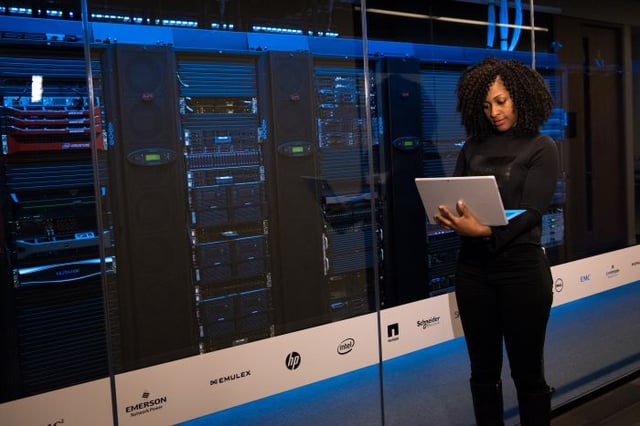I attended IBM’s big coming out party for OpenPOWER and its new Power strategic effort and one of the more interesting concepts was that the company positioned this as the third generation of data center scale out. I actually think it is the fourth generation (I’ll cover that), but it is fascinating to see where the power, no pun intended, resides in each generation.
The Four Generations of Data Center Scale Out
First Generation
The first generation has to be the mainframe. The mainframe was owned by the solutions provider, IBM, and the solution was defined by IBM, but owned by MIS, an earlier acronym for IT. What I think is fascinating is that hardware and software were combined into a solution that pretty much aggregated most of what had been done with calculators and filing systems into one big box. The hardware vendor, and IBM was the most powerful at the time, owned the solution, with MIS kind of like the local priesthood. I say priesthood because the running joke was that to get something done you needed to sacrifice chickens or bring in a bunch of virgins. Netting this out: Scale was good, agility not so much.
Second Generation
This started out being called client/server, implying that there was something intimate between the clients and servers. In reality, not so much. Sun Microsystems was the power player here, but in hindsight, this was a suicidal strategy for the company. The power ended up residing in Intel and Microsoft, and they put Sun down painfully. In addition, at first, the solutions largely didn’t work, though it is interesting to note that telephony almost got integrated by AT&T and IBM. But that integration effort failed. As the power shifted from servers to clients, server-based processor platforms (SPARC, Alpha, Power) gave way to X86 and even Itanium (Intel’s big data solution) gave way to the economies of scale created by the desktop technology. However, this seemed to drive control even farther from users over time.
Third Generation
This was the creation of the mega web services companies. The first to scale was Google, followed by Facebook. This put the service providers in control and they defined their own systems, largely based on open source software and their desire to build their own systems. Microsoft lost out but Intel held, albeit with less control over the outcome. Components were standard but the systems were built by the firms that were using them to provide services. The result still leveraged desktop technology heavily and wasn’t yet optimized, but there were strong advancements in ease of implementation and agility, while security and privacy seemed to suffer. This is the generation we are in. Amazon Web Services and Microsoft’s Azure efforts are tending to dominate, potentially displacing Google, which still can be a kingmaker.
Fourth Generation
The fourth generation puts more power in the hands of the service provider and potentially reduces Intel’s hold on the market. It doesn’t necessarily affect Microsoft (it depends on how Microsoft plays this) and it could dramatically scale those providing web services up while addressing security and privacy concerns, depending on how this generation evolves. This takes the open concept and drives it into the processor. This is what IBM is attempting with the OpenPOWER announcement, so that the result revolves around Power rather than ARM. Power is already capable of providing large-scale data center performance, while ARM will have to be stretched to take this kind of load. Stretching the same architecture from smartphones to large servers, as Intel has discovered, is far from an easy, inexpensive or short path. Google is driving the effort. If it is successful, this would potentially put Google in a far better position against AWS and Microsoft than it currently is. Basically, users retain a high level of control but the service provider can better optimize on cost and capability, allowing it to differentiate more strongly.
Wrapping Up: Fifth Generation Data Center Scale Out
As I finished the last paragraph, this got me thinking of the fifth generation, where I think the system itself gets the power. The next big step is likely some form of artificial intelligence, where part of the system’s capability is defining what it needs to change in order to better meet user needs dynamically and operate more efficiently. In the fifth generation, the system gains the power, no pun intended. That reminds me that I should likely watch the Terminator movies again. In any case, what I think is fascinating is that power shifted from IBM to Intel and Microsoft, to Google and Amazon, and may end up in none of the above. But in all cases, the result should eventually be lower cost, more agility, and improved reliability so the power gets ever closer to the user. Assuming we don’t become obsolete, the trend is a good one.










